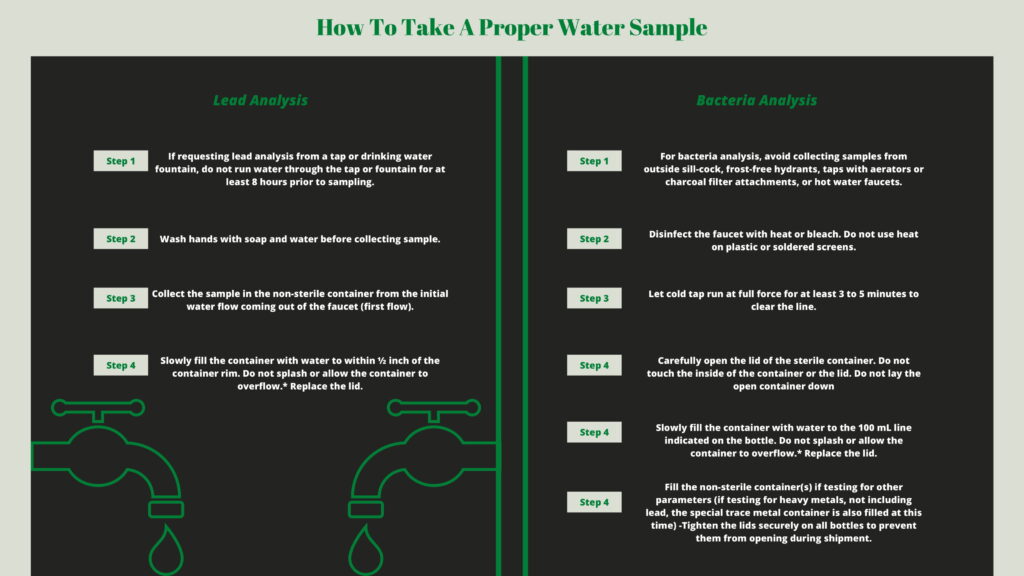Proper Water Sampling
Water quality data is only as good as the water samples from which the measurements are taken. Even the most precise laboratory analysis of a water sample cannot compensate for improper or poorly executed sampling procedures, or for physical and chemical alteration of a sample due to inappropriate sample collection, transport, or storage.
Samples must be analyzed within 48 hours of collection. Samples analyzed between 30 and 48 hours after collection will be flagged to indicate possible invalid results.
The shorter the time elapsed between collection and analysis of the sample, the more reliable the results. (The reliability of the results will be improved if shipped with blue ice in an insulated container).
Only samples collected in pressure-sterilized containers are submitted within 6 hours of collection will be analyzed for coliform bacteria.

